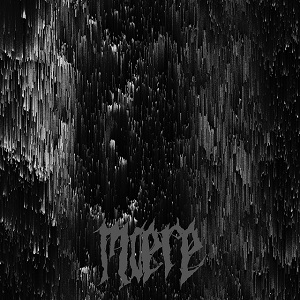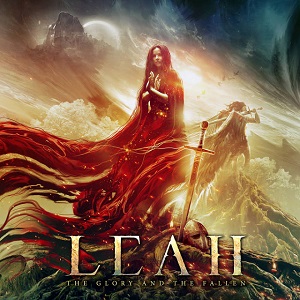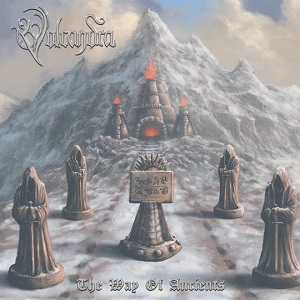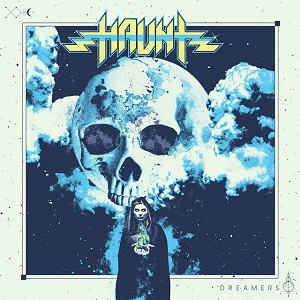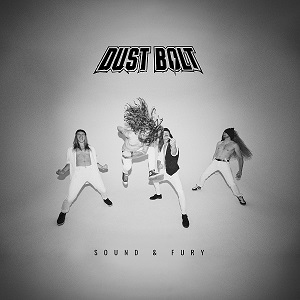SCORPIONS’ Classic Lineup Debut Fly To The Rainbow Turns 40 - “Personally I Didn’t Like That Cover At All”
November 1, 2014, 9 years ago
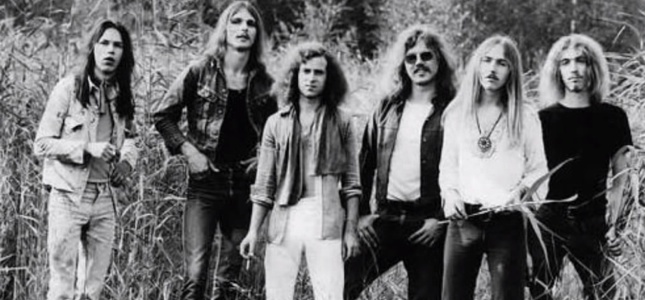
Hard to believe but today marks 40 years exactly since Uli Jon Roth joined the legendary Scorpions for the band's second album officially, but first to set the stage for the nascent heavy metal sound that would make them the biggest band Germany ever produced.
In this Uli-focused excerpt from my book Scorpions: Top Of The Bill (available only at martinpopoff.com), we at BraveWords celebrate the record that would provide the way for the likes of In Trance, Virgin Killer and the groundbreaking Taken By Force, Uli Jon Roth's last studio album with the band, from 1977.
Ulrich “Uli” Jon Roth, at the age of 19, would arrive within the Scorpions ranks as part of a merger between two competing acts. Indeed all that would remain of the band that fashioned Lonesome Crow would be Klaus and Rudolf, who had actually briefly broken up the band after Michael had left.
“Uli Roth and I had a four-piece-band called Dawn Road with Jurgen Rosenthal on drums and Achim Kirschning on keyboards,” explains Francis Buchholz, at this point the Scorpions’ new bassist. “One day Rudolf of the Scorpions called and asked Uli to help out playing lead guitar at some Scorpions shows, because their guitarist Michael Schenker had left the band. Soon the Scorpions broke up and Rudolf visited us at Dawn Road’s rehearsal room. He needed new companions for his Scorpions, because everybody else had left Rudolf alone. We discussed how we could start the Scorpions new. Rudolf thought about becoming the singer. But he changed his mind and talked Klaus into joining us. So basically Rudolf and Klaus joined our band Dawn Road, but we named ourselves Scorpions from that moment on, because that name was already better established.”Fleshing out the story of the band’s career arc in the early ‘70s, Francis says that, “After their first album, the Scorpions had split and they lost their recording contract with Metronome Records here in Germany. The ‘new’ Scorpions were formed: Klaus Meine, Uli Roth, Rudolf Schenker, Jurgen Rosenthal and Francis Buchholz. A concert promoter from Hannover, who managed us at the time, was able to get RCA Records (today it’s Sony BMG) interested in the band and we got lucky signing a contract with RCA over five albums. Our first RCA album, Fly To The Rainbow, was recorded in Musicland Studio Munich with an engineer named Mack, who has worked with Queen there. I still remember his 1970 Mercedes SL. We got everything recorded with a very good sound in quite a short time. On drums, there was Jurgen Rosenthal and keyboards, Achim Kirschning, both from our former band Dawn Road. Achim was no band member, because he wanted to become a teacher. And soon after the recordings Jurgen had to leave the band and join the German army, through the draft.”
“I had been in the band for about less than a year,” affirms Uli, on the ramp up to the making of his first album. “I mean, the original Scorpions had broken up, and then there was a big lull, and the band kind of folded, and really only Rudolf was left. And I had a band called Dawn Road, which was a four-piece. Which was Francis Buchholz, Jurgen Rosenthal, a keyboard player and myself, and we joined forces with Rudolf, and then Klaus came back in, and then because Scorpions had a record contract and were already a semi-known brand in Germany, we called it Scorpions, and we took it from there. And by that time I had very little writing experience. I had written a few things for Dawn Road, but I started writing immediately for the Scorpions, and the first one I wrote was a song called 'Drifting Sun,' and then of course, most of the songs, on that album, had already... some of them were already in semi-existence, shall we say. Rudolf already had some chord changes and some melodies, and then we elaborated on them together.”Fly To The Rainbow, issued November 1st, 1974, would retain the band’s definite Krautrock vibe, even if hard rock or proto-heavy metal was becoming more prevalent in the sound. But the album’s cover art was almost nonsensically surrealistic, an up-ratchet in intensity over the debut’s illustration of a hand bitten by a Scorpion—Lonesome Crow’s wraparound to the back revealed that the headbanger “at hand” was probably dead, with a black crow having alit on his outstretched arm.
“I’ll tell you the story,” laughs Uli, asked about the flying scorpion man on the Fly To The Rainbow cover. “Personally I didn’t like that cover at all. I tried to convince everybody not to have it. I just didn’t like it (laughs). It wasn’t done by the band. It was done by a studio in Hamburg. They got the album, it was commissioned, and that’s what they came up with. And I said, ‘Rudolf, look, we can’t have this for the album cover; I think it looks ridiculous.’ And he said, ‘Well, the guy did a great job on the very first album,’ which was called Lonesome Crow, which I agree, actually, I did like the Lonesome Crow cover. And he said, ‘Well, obviously that’s what he feels like when he hears the album’ (laughs). So to me, it just didn’t feel like the album. And in fact, I remember our then drummer, Jurgen Rosenthal, used to paint quite a bit, in oils, and he did an album cover for Fly To The Rainbow, which I preferred at that time, but in the end the one that you know was chosen.”

“I have to say when we did it, we didn’t think about doing something new,” continues Uli. “And with hindsight, I guess I’ve realized it was new. It was kind of like a variation of what I’d been before, but it was kind of an interesting combination of things. And it had an unusual sound. It was kind of a winning kind of mixture of individuals that worked well together as a team, onstage and offstage. And we did five albums while I was there, and each one was a part of the journey and we were exploring music and getting better each time around. I guess that was it. We were the lone German band, that’s true. But again we didn’t really look at things that way. We just did really what we wanted to do—wanted to do new music, you know? And very early on we started playing abroad, started playing France, Belgium, and then England every year. So yes, we were a German band and I guess to some degree also we sounded German, but we were very influenced by British and American bands at that time.”
And not much was happening with respect to hard rock in Germany at the time, prompting that comment about Scorpions being the lone German band. “It was certainly very different. I remember when we first started out, like in ‘73, the bands that were big were like Emerson, Lake and Palmer, bands like that. And Yes was starting out. And we in Germany were, I think, a bit of an anachronism at that time. I was into Hendrix and I learned a lot from that, but at that time Hendrix was not yet… just died three years before but he was a little bit out of vogue. So we were a very eclectic bunch, doing the style of music that some people in Germany didn’t get at all. But once we started playing abroad and the band got better at what we did, we started kind of cleaning up on the festivals, you know? So then it changed. And it became kind of more respectable in Germany as well, around ‘75 or so.”
So it’s easy to imagine Fly To The Rainbow as a record perched between two worlds, tilting toward a more immediate hard rock, in large part because the band’s new guitarist did not have art rock or Krautrock as part of his influence set or repertoire.
“Me personally, not at all,” reiterates Uli, asked about the extent of prog in his pudding. “Now, I don’t know if that’s a good thing or a bad thing, but I was very single-minded and I tended to shadow most things. I guess nowadays I’m more open-minded, but back then, my fascination lay with Hendrix, Cream, and later on a little bit of Led Zeppelin. Those were my main influences, to start with at that time. The German rock scene, whatever there was, I didn’t notice it. It completely passed me by, and when we played on festivals with them, there wasn’t a single band that really did anything for me, and that was probably also because there weren’t any guitar-oriented bands at that time. You had bands that wrote epic stuff. You had bands like Eloy, but I was more interested in bands where the guitar players have a leading role, and in Germany, we were absolutely the only band who did that. At least to my knowledge.”It wouldn’t be out of line to call Fly to The Rainbow’s opening salvo, “Speedy’s Coming,” Scorpions’ first, best form of this new approach Uli is getting at, straight to the gut, like Scorpions’ first shot at a “Mississippi Queen.” In effect, this short, shocked heavy metal rocker represents the band’s introduction to the nascent heavy metal genre which would reward the band so richly in the years to come. No surprise that the song was floated as a single, backed with “They Need A Million.” Sending the song into higher relief, it is the only track deep into metal from the entire album, not to mention comparatively to the sum total of Lonesome Crow. Rudolf emerges as the rhythm guitar master that would launch a dozen smash singles, and as foil, Uli rips aggressive leads that grind and whammy bar-divebomb more forcefully than any we had heard out of Michael.

But then it’s into a fairly Germanic, prog rock miasma, starting with “They Need A Million,” the very Spanish melody of which forms a blueprint for a more metallic rendition of the same called “Steamrock Fever” three records hence.
Next up is a fairly heavy track called “Drifting Sun,” of which Uli is the sole author. The descending riff structure derives very much from Hendrix and Cream, and it is Uli’s first of a handful of lead vocals he would perform throughout his four studio albums with the band. Pounding the track toward metal almost to the point of distraction is a thumping performance from Rosenthal, with Roth himself helping the caterwauled cause with omnipresent howling leads.
Perhaps it’s 20/20 hindsight, but such a visceral capture of drums... one might ascribe that happenstance to the presence of Mack as recording engineer, who shares the engineering credit with Horst Andritschke, Scorpions themselves taking the production credit.
“It was the famous Mack, but back then he wasn’t that famous,” laughs Roth. “We actually never found out his Christian name. He didn’t want us to know (laughs), which was funny. But no, we did had a producer for that album, and it didn’t really work out and the record company weren’t happy, so in the end, you know, we got the production credit.”Elaborating on how the recording of the album went down, Uli adds that “Musicland was, I guess, a very established music studio by that time. Because the Stones had just been there before we had came; I remember that. But you see, for me that was the first time I was in a studio, for Fly To The Rainbow, so I didn’t have any reference points. So I came in there like a complete novice, and to me, it felt claustrophobic. It was tiny—I mean, tiny! And to me it sounded horrible in there. It was just like one of these studios nowadays that are old-fashioned, which are totally dead. They mute everything to the point where there’s no more resonance. So it was one of these places, and I was absolutely not happy with the guitar sound. So the engineer, Mack, he said, ‘Yeah, but that’s the best guitar sound in Germany.’ Well, it didn’t really make me feel any better. But I had no reference points. But deep down inside I knew that this wasn’t what I was looking for. I wanted the guitar to sound like on the stage, much more natural, with natural ambiance and big. Like, the big Marshall sound is like a wild stallion. Like a big Formula One car or airplane. You can’t put it into a little box; it just doesn’t work together. And that’s exactly what they did back then. So yeah, I thought the album was good, but again, these things didn’t satisfy me.”

As for the record’s “self”-production, “Well the thing was, we were supposed to have a producer, and he was the founder, founding member of this band Eloy, Frank Bornemann. But for some reason… He was there when we were recording, but for some reason, it didn’t end up that way. We kind of produced it ourselves. It just wasn’t the right chemistry, I guess. And so that’s why we got the production credit. And it also had to be remixed because the record company… Back then, you see, we didn’t have the experience. We didn’t know that we can tell the sound engineer exactly what to do. So the guy mixed the vocals too low; they were too quiet, and I knew that, but he had a different kind of preference. And so the record company, RCA, at that time, rejected it. Then Rudolf and myself, we went to another studio, in the north of Germany for a couple of nights, and we tried to correct everything by remixing those vocal passages, and that then became the finished product.”
Closing side one of the original vinyl was what one might consider the first of the band’s notorious “power ballads,” “Fly People Fly” playing to that formula of slow, quiet and dramatic for the verse, anthemic and heavy for the chorus. The songwriting credit for this one is the first of three on the record for the departed Michael Schenker.
“That’s because he wrote and co-wrote some of those songs,” explains Uli, “because when Michael left for UFO, the band split up, and there was no more Scorpions. Rudolf and Klaus and Dawn Road, we kind of formed a new band, and we made a new Scorpions. But there were already some of those songs, like 'Far Away' for instance, and we used them as a basis for that album. Because I had only just started writing songs, and it was good material, and we weren’t going to throw it away. So he gets these writing credits, based on his original writing.” Uli also confirms that these were not leftovers from Lonesome Crow. “No, no, they were written afterwards.”Onto side two, and “This Is My Song” offers a pert and powerful pop metal, the band accomplishing this by putting their prog predisposition into a succinct and driving structure, adding a memorable twin lead that amusingly sounds more Maiden than Lizzy. Professional video footage exist of the band pounding through this one live, the end effect sounding and looking not unlike Uriah Heep on a tear.
“Far Away” offers more of the album’s acceptably heavy and chunky hard rock, even if the power chords utilized are of an older tradition circa Hendrix, Cream, Humble Pie and even BTO, versus the modern metal to come circa Uli’s later records with the band. Lyrically a theme is forming, reaching back to the debut in fact, around flying, fantasy, solitude, loneliness, and the spreading of love.The album closes, like its predecessor, with a long, involved title track, “Fly To The Rainbow” offering up a pile of prog, a little folk, and again, twin leads of a mournful nature that we would get through Iron Maiden. Interesting that Uli Jon Roth gets a co-credit with Michael, who he never wrote with. It is only Uli’s second credit, after his sole ownership of “Drifting Sun.”
A few interesting notes on the band’s timeline to this point... Uli Jon Roth’s first show with the Scorpions would be a mere five months after the February release of Lonesome Crow, a German club show on June 29th of ‘73. Fly To The Rainbow would be worked on in April of ‘74, with drummer Jurgen Rosenthal out of the band shortly after, playing his last show on June 30th of ‘74, five months before the album bearing his credit would be released.
The limited tour itinerary for Fly To The Rainbow would find the band, again for the most part, stuck legging it around Germany, playing with the likes of Edgar Broughton and Dr. Hook. All told, response to the record in the western world was minimal. Essentially, Fly To The Rainbow was viewed, very much signalled by the absurdist front cover, as a Krautrock album that somehow escaped and wound up with wide distribution, inexplicably showing up in the record section of your middle American drugstore. As for the contents, the album supported the trending idea that many of these German bands, proggy as they were, quite fancied hard rock, and were intent on using its mechanics, as demonstrated by bands that had visited Germany and done well, mainly Deep Purple and Uriah Heep. Still, it would take another record, and a markedly more focused one, for the band to break out and demonstrate to the western world proper “why Scorpions gotta sting,” in the cheesy parlance of this band trying desperately to communicate.
(Classic photos courtesy of Francis Buchholz Facebook page)



